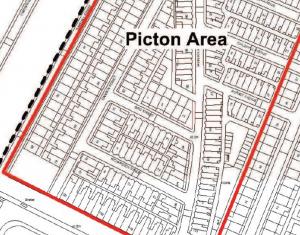
Find more posts
Liverpool "Homes for a Pound" scheme - major expansion on cards
Latest
March 27, 2015



Liverpool City Council's Cabinet Committee is to consider a major expansion of the "Homes For A Pound" scheme at its meeting on April 2nd, to be dubbed "Homes For A Pound Plus".
A report in the Liverpool Echo also features some video clips of a house that has already been refurbished through the 20-property pilot scheme. Now the aim is to bring another 150 properties into the initiative in the Picton area An innovative aspect of the new proposal is a pilot "Shops For A Pound" strand, addressing vacancy in the commercial units on nearbby Smithdown Road, an A-road leading into the city from Speke and Widnes.
The homes scheduled to be brought into the scheme seem to be in a "clearance area" and the Council is intending to ask the HCA to release it from charges on the properties which it acknowledges are being sold at less-than-best value. This will be an interesting part of the exercise and highlights the rarely-ackonwledged aspect that such schemes do involve a transfer of value from the public sector to the private sector. It is never clear in these cases whether the homes might instead be sold for £100, £1,000 or £10,000. The "£1 home" is a powerful brand however.
Key sections of the Cabinet Report read as follows:
Executive Summary
On 19 December 2014 Cabinet adopted a Ten Point Plan for bringing a further 2,000 empty properties back into use. This set out a number of initiatives for tackling empty homes. The report included a proposal to introduce ‘Homes for a Pound Plus’ which builds on the success of the Homes for a Pound pilot scheme.
This report outlines the plans for bringing forward ‘Homes for a Pound Plus’ which will deliver an extra circa 150 homes brought back into use with a particular focus on regenerating the Picton area. The report also details proposals for a small scale Shop for a Pound scheme to be piloted in the Picton area as part of a comprehensive approach to neighbourhood regeneration.
Background
In February 2013, Cabinet approved a homesteading programme for the Granby Four Streets, Arnside Road and the Webster Triangle area of the City. This programme was called Homes for a Pound and attracted considerable media attention and public interest by offering 20 homes for eligible applicants for £1. This report also made reference to the adjacent Picton Phase 3 (clearance area) and it is now proposed that a project is developed to refurbish void properties in the Picton Phase 3 area alongside Webster Triangle.
A formal application process was launched in April 2013 with clear eligibility criteria and conditions. To be eligible applicants needed to live or work in Liverpool, be first time buyers and be in employment. Selected applicants would be required to live in the property for a minimum of five years and not permitted to sub-let it. The scheme was massively oversubscribed and all 20 available homes have now been matched with relevant applicants.
The selected properties have been made available to the successful applicants through a licence agreement initially while the refurbishment works are undertaken. On satisfactory completion of the works the ownership of the property is transferred to the purchaser.
The Homes for a Pound pilot has been positive for a number of reasons:
- It has levered in around £750,000 of private investment in long term vacant dwellings;
- The scheme has complemented other regeneration initiatives going on in the target areas;
- It has provided home ownership opportunities for people who would otherwise have been excluded due to mortgage lending restrictions; and,
- The pilot has enabled the development of a delivery model that includes a robust assessment process, an appropriate legal agreement and suitable insurance cover.
- A focus on circa 150 Council owned properties in the Picton area which are currently void. The properties will be split into five separate phases based upon condition and geography with each phase released to the market sequentially to avoid market saturation and better manage demand;
- Exploration with relevant social landlords to include void properties they own within the scheme;
- Undertaking of remedial structural works on those properties in particularly poor condition to make them viable for the Homes for a Pound approach;
- A review of the current waiting list to establish whether those who applied in April 2013 are still eligible and interested in the scheme;
- Opportunities for new applicants to express an interest in the scheme; and,
- The development of a financial assistance product for applicants who are not in a position to fund refurbishments from their own resources.
